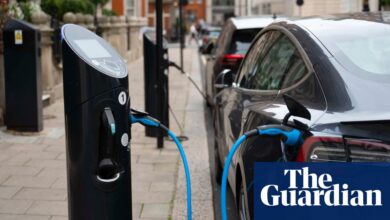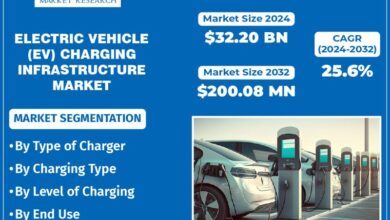Analysis-China’s EV survival game creates peril

BEIJING (Reuters) – By most measures, the last thing China needs is more electric cars crowding a market with more losers than winners, driving down prices at the expense of profit and taking the fight for market share beyond China.
And that’s just what it is getting.
Automakers are expected to launch 110 EVs and plug-in hybrids in 2024, many at the Beijing auto show that starts Thursday. Those new offerings, dominated by Chinese brands, will join the almost 400 “new energy” models already in China’s showrooms, according to industry data.
By contrast, there were just over 50 EV models on sale in the United States last year.
But while there is a peril in China’s overcapacity, there is also a power in the hyper-competition it has unleashed, analysts, suppliers and executives say. China’s leading EV makers have found ways to slash vehicle development time, combining speed to market with new features and a pricing advantage rivals outside cannot match.
“This is a technological revolution,” said Wang Xun, founder and chairman of Shanghai-based auto design and engineering firm Launch Design. “And in this revolution, Chinese brands are at the forefront.”
Analysts widely agree China’s EV market, the world’s largest, faces an eventual shakeout. Just not yet.
The top-selling 10 EVs – a list dominated by BYD and Tesla – have accounted for over half of sales in China so far this year. With capacity to build more battery-powered vehicles than the market can support, prices at home are tumbling and exports are rising.
BYD, China’s leading EV maker, has cut domestic prices on three leading models by more than 9% this year.
But new competitors are also stepping in, including smartphone makers Huawei and Xiaomi, who have struck partnerships with established automakers with spare capacity. State-backed companies are also rolling out new EVs to support a government mandate to build China’s lead in networked cars.
“Things become cheaper quicker in China,” said David Li, CEO of Hesai , a leading supplier of LIDAR remote sensing technology for self-driving features. “It’s not because China is cheap. It’s because China is fast.”
Hesai is rolling out a LIDAR unit that is about half the price of its most popular model, now used by Li Auto and Xiaomi. By cutting car development to 18 months from three years or more, Chinese EV makers take advantage of falling prices for technology like that, Li said.
“It’s a cheaper product because of speed and innovation,” Li told Reuters. “I think that’s part of it that a lot of people may not fully understand.”
‘UNHEALTHY’ OR ‘REVOLUTION’?
In the past weeks, Huawei and Xiaomi have launched EVs with a blitz of publicity, just months after Apple killed its decade-long effort to launch the equivalent under its brand.
Xiaomi created an online sensation with the launch of the SU7, an EV that looks so much like a Porsche it has spurred a nickname “Baoshimi”, a mash-up of the two brand names in Chinese. Xiaomi is targeting 100,000 sales this year, a big debut for a new entrant.
Dongfeng, one of China’s three big state-owned automakers, and a company that has failed so far to find its own hit EV, is promoting its new eπ-007 (e-Pi-007) in advertisements at Beijing’s main rail station. The EV sedan, which looks like a Tesla Model 3, costs almost $10,000 less.
In a marketing flourish of the kind Elon Musk has employed, Dongfeng says the 007 battery survived nine rounds fired from an AK-47 and operated underwater for a full day in lab tests. The company sold under 4,000 of the new cars in China through March. Exports are coming, it says.
Xiaomi expects to lose money on the SU7. Most of its incumbent rivals are also betting they can sustain losses now and grind their way to profitability.
“Money is being spent at the moment in the market without the possibility to get the money back,” said Volkswagen China chief Ralf Brandstaetter, who called it “an unhealthy situation”.
But Launch’s Wang is betting on even more disruption: using the China-market standard for cost and speed to open the door to car brands that don’t yet exist.
Launch, which has done design and engineering work for most EV brands in China, has developed its own platform: “Launch EV One”. It is pitching the crossover prototype to potential partners, including in developing markets, who want a quick-to-market EV without up-front costs that run into the billions.
“We are working to lower the barrier to entry as much as possible,” Wang said. “Once this is done, it will cause another kind of revolution in this industry.”
Launch, which has filed for an initial public offering in Shenzhen, is ready to customise an EV for an overseas brand, do the engineering, sourcing and safety testing and even build the new vehicle at its plant in Jiangxi, southern China. It is in talks with potential clients.
The company’s Shanghai design and engineering headquarters has the feel of an industrial WeWork space. Hundreds of engineers and designers share an open-plan office with long tables for 12 hour-days, six days a week. Prototypes are parked on the crowded street outside.
“The brands that have survived are putting new cars on the market faster than others,” Wang told Reuters. “We want to ride this wave, rather than be submerged by it.”
(Reporting by Sarah Wu, Zhang Yan and Kevin Krolicki; Editing by Christopher Cushing)



